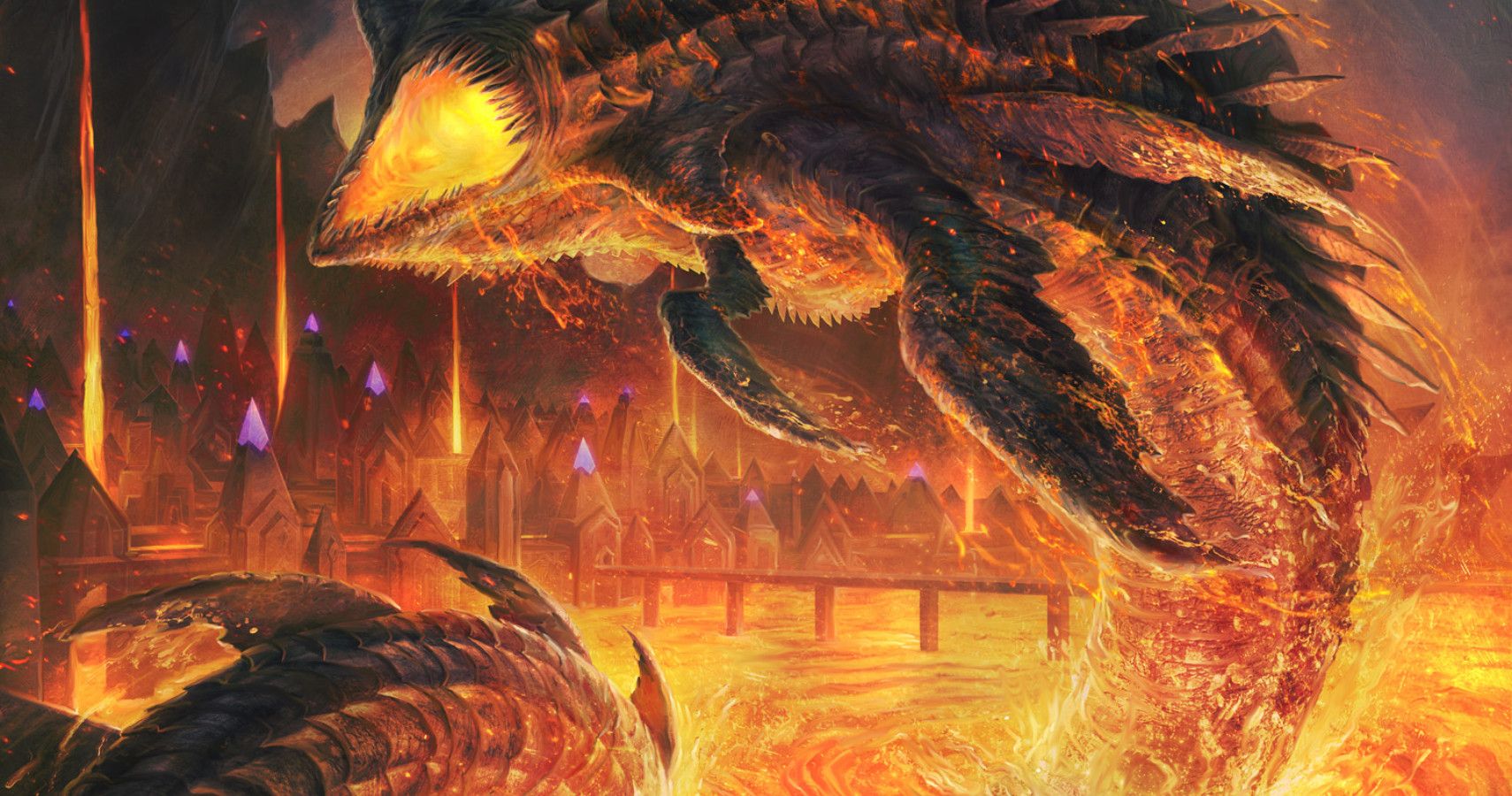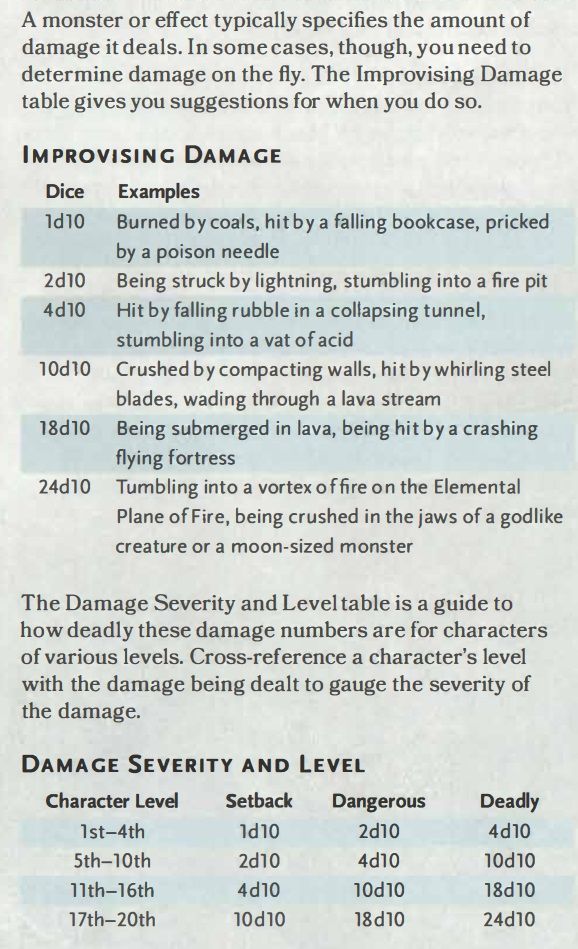Dungeons & Dragons: How To Figure Out Damage For Stuff Like Falling Rocks & Lava
It can be hard to make judgments about exactly how much damage players should take when injured by something without predetermined numbers in D&D.
You Are Reading :Dungeons & Dragons How To Figure Out Damage For Stuff Like Falling Rocks & Lava

While Dungeons & Dragons leaves a lot to DM discretion, it can be hard to make judgments on the fly about exactly how much damage players should take when they’re injured by something without explicit attacking numbers. Like, for example, a very big rock, or perhaps a puddle of molten lava. Players and their DM alike understand implicitly that these things will harm them, but they can’t exactly go to the monster manual to see how much they will harm players.
Luckily, the official Dungeon Master Guide for 5e provides a table to act as a rough guide for determining how much improvised or environmental damage players might take from an action – and even how the numbers translate across levels. A frail level 2 Cleric or Mage might die after being struck by lightning. The burly level 15 Barbarian? Not so much, although it would still eat a chunk out of their health.
The general rule of thumb is this: if there is some function or element of the environment that could reasonably harm a player, DMs can determine if that harm would fall under the Setback, Danger, or Deadly threat level. What is Deadly to a team of level four player characters would probably only amount to a Setback for level 16 player characters. Based on the level of the player characters and the type of environmental threat, the DMG provides a handful of possible damage ranges using d10s.

They also provide examples about the types of situations that would call for these damage ranges – from a heavy bookshelf falling onto someone (1d10) to “being crushed in the jaws of a godlike creature” (24d10). Improbable as it is, these damage rolls give players a chance to survive rather than be instant-killed, something many DMs will try to avoid in the interest of fairness. These suggestions are also good for coming up with inventive encounters, and challenges, not necessarily just explaining away unexpected sources of damage.
It’s one thing if a character fails a strength check and topples some furniture onto themselves and takes damage. It’s another if you have a leviathan-sized enemy uproot and throw entire trees as javelins, or decide to call a rockslide or an avalanche down on your party. These guidelines help you implement both spur of the moment injuries and major encounters or events that could lead to grievous harm.
Link Source : https://www.thegamer.com/dungeons-dragons-calculating-improvised-unofficial-environmental-damage/
